Keeping flies, bugs, and other pesky insects at bay can be challenging. They reproduce quickly and fly at incredibly high speeds, making it difficult to catch them. Flies are also known to spread diseases like typhoid, cholera, E. coli, food poisoning, and tuberculosis, to mention a few.
Most pest control companies use synthetic fly repellants to eliminate these pesky insects, but they are often associated with severe health and risk concerns. As a result, some companies are incorporating natural fly repellents into their pest control regimens.
They are regarded as safer alternatives because their formulas are less toxic, yet they eliminate flies just like their counterparts. However, with little scientific evidence showing their effectiveness, you might wonder whether natural fly repellents work.
What’s the History Behind Natural Fly Repellent Plants?

Most plants have compounds with repellent qualities to prevent attacks from plant-eating insects. The compounds have nitrogen compounds, terpenoids, proteinase inhibitors, phenolics, and growth regulators that have repellent properties. Other natural plant defenses are found in repellent plants like Venus flytraps, pitcher plants, butterwort, and cobra lily, for instance, which are carnivorous plants that attract, trap, and eat insects.
Studies show they contain volatile oils, extracted when the flowers or foliage are crushed to release strong odors. The oils make essences that act as natural insect repellents. Insects, including flies, detect these odors when the smell binds to their odorant receptor proteins located on their antennae and maxillary palps, creating a repulsive effect.
Humans have exploited this concept for years. According to ancient Greek writings, homeowners hung bruised repellent plants in houses and applied oil formulations to the skin to ward off flies and mosquitoes. The same notion applies even today, hence the shift to natural fly repellents.
Studies also show that volatile oils are most effective in warm and humid weather. Other factors like proximity, wind, and the quantity of the plants also play a significant role in their ability to repel flies.
The Fly Deterrent Market Is Largely Untested

The law requires insect repellents containing picaridin or DEET to undergo extensive tests under the EPA’s product-performance test guidelines. As a result, products come with a label showing the ingredients, toxicity information, protection time, and instructions on how to use them.
The tests also help users understand safe products to use on kids, adults, and animals. The EPA classifies natural fly repellents as minimum-risk pesticides; hence, they remain untested and unregulated. Without tests, registration, or regulation, it’s difficult to determine if a natural fly control repellent can work.
It leaves pest control companies with too much experimentation. The only way to identify effective natural fly control repellents to add to your arsenal is to look for products with specific natural ingredients that have already been proven to repel flies and insects.
Scents and Oils That Work
Although more standardized testing is required to determine the natural fly deterrents that work, some natural products have some scientific backing that proves their effectiveness in getting rid of flies. These best fly repellents include:
Lemongrass Oil
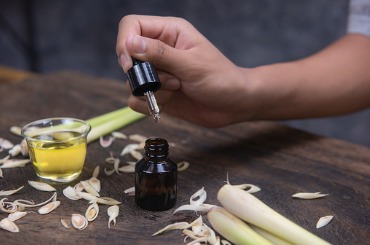
Lemongrass oil is a natural product that has proved effective at keeping flies away. It has two active compounds, neral, and geranial, which release the repulsive effect. A study to determine its effectiveness found that flies spent more time in an untreated zone than in the area treated with lemongrass oil.
The experiment used stable flies, known for their damaging effects on livestock. The flies are also potential vectors for transmitting animal pathogens like the equine infectious anemia virus. That’s why lemongrass oil is the primary ingredient in most DEET-based synthetic insect repellents.
You can use lemongrass oil alone or with other essential oils for more repulsive effects. Adding lemon eucalyptus oil or even lemon balm creates a more potent repellent that lasts five to six hours. Other essential oils, like rosemary oil, also come in handy, as they make a pleasant aroma formula that repels flies faster and helps avoid fly infestations.
Oil of Lemon Eucalyptus (OLE)

This is another repellent plant-based product that proved to be an effective fly repellent. It’s EPA-approved, which makes all the difference between it and lemon eucalyptus essential oil. The latter is distilled from the leaves of a lemon eucalyptus tree and has many chemical components; among them is citronella.
Citronella Candles
Studies show extracts and essential oils with citronella, such as citronella candles, are used as ingredients for natural mosquito repellents. Even so, OLE is regarded as a more effective fly repellent. That’s because it’s extracted from the leaves of a lemon eucalyptus tree and is rich in para-menthane-3,8-diol (PMD).
The OLE extract is then refined to increase the PMD content, making it a more effective fly repellent. PMD can be made in a lab, but OLE repellents made from lab-made PMD have a lower concentration (10%) than commercial OLE repellents (20%).
Catnip
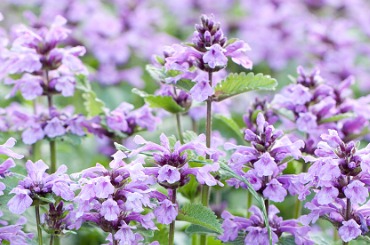
Although catnip is known for its hallucinogenic and euphoric effects in domestic care, it’s also a powerful repellent on insects. Its extract is proposed as a natural alternative to synthetic bug repellents like DEET (N, N-diethyl-3-methylbenzamide).
A study to determine how it works found that catnip contains an active ingredient called Nepeta cataria, which repels insects. The chemical triggers the insects’ chemical receptor (TRPA1), which stimulates sensations like itch or pain, causing them to fly away.
Citronella
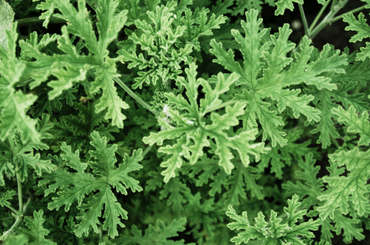
This is another plant-based oil extracted from the leaves of Citronella grass. The plant is often used to accentuate gardens, but it can keep flies away too. It has such a robust and lemony smell that it masks any other foul scents that may be attracting flies to the garden.
Consequently, flies find it hard to locate the stinky smell luring them to the park, living area, or other space. Citronella oil occurs in various forms, including bug sprays and candles. You can set up the candles in strategic locations and allow them to burn for some time to ward off flies.
Coconut Oil
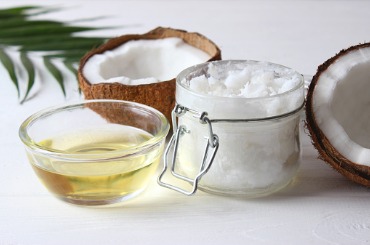
The U.S. Department of Agriculture found that coconut oil compounds repulse bugs. According to the publication, coconut oil fatty acids have long-lasting repellency effects on ticks, biting flies, mosquitoes, and bed bugs.
Note that coconut oil isn’t the repellent but the fatty acid mixture, which contains capric acid, lauric acid, methyl esters, and caprylic acid. The fatty acids are encapsulated in a starch-based formula to protect against stable flies for as long as four days. By comparison, the coconut oil compound is much more effective (95%) than synthetic products that contain DEET (90%).
Cinnamon
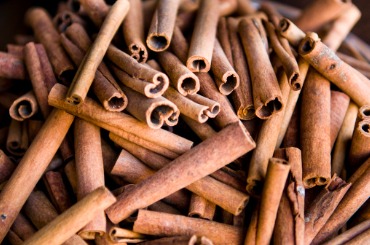
Cinnamon is another natural fly repellent for flies, roaches, ants, mosquitoes, spiders, and wasps. It has an overpowering smell that irritates flies and contains a chemical compound called eugenol used in insect repellents. You can use cinnamon in different ways, not just in its ground form:
- Coconut sticks: They have a higher oil concentration and a more pungent scent. They are steeped and a tablespoon of water added to increase their effectiveness
- Cinnamon essential oil: A diffuser may be used or a mixture created by mixing drops of the oil with two cups of water. Use a spray bottle to spray the mixture in areas that attract flies to prevent them from lounging there
- Cinnamon incense: A few cinnamon incense sticks are lit to release the scent. The incense acts as an air freshener for flies, keeping the space smelling fresh while keeping off flies
Olive Oil
Olive oil is not only a staple in cooking but can also be used as a natural fly repellent. A study conducted by the American Journal of Tropical Medicine and Hygiene found that mixing olive oil with essential oils like citronella, eucalyptus, or tea tree oil can create an effective insect repellent.
Mineral Oil
Lastly, mineral oil is a natural fly repellent that can be used in gardens and outdoor spaces, especially near a picnic table while enjoying a picnic or family barbecue. When sprayed on plants, it creates a barrier that flies find difficult to navigate through. This helps protect your plants from damage caused by flies laying eggs on them or feeding on them.
Get Started With Pest Control Software!
Other Natural Products To Keep Flies Away
Besides the science-backed natural repellents, you may find anecdotal remedies to keep flies away in smaller spaces. They include:
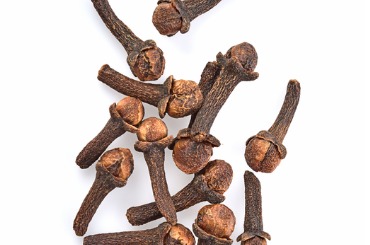
Cloves
They are effective deterrents for fruit flies. Cloves have a strong smell, which flies find irritating. The clove may be used alone or with a few apple pieces added to turn it into a pomander ball.
Basil
The outdoors is ripe ground for flies too. Piles of grass clippings and compost attract flies, which can be challenging to eliminate. Besides using the usual outdoor solutions like hot water and pine sol, basil plants are a reliable natural outdoor fly-repellent product that can keep them off.

It has a strong and beautiful fragrance that irritates flies. Basil contains four volatile compounds (limonene, citronella, nerolidol, and estragole) that disrupt the fly’s carbon dioxide sensors. The compounds ultimately reduce a fly’s ability to recognize food, drinks, or foul-smelling items.
Knowing how to use it is critical to its effectiveness. Burnt basil leaves, potted plants, basil oil, and steamed leaves are all forms that harness their bug-repelling properties. Burning basil leaves, for example, vaporizes the bug-repellent compounds, keeping bugs at bay.
Another effective way to keep them away is to use basil as a companion plant with vegetable crops like tomatoes, peppers, and asparagus.
Witch Hazel and Apple Cider Vinegar Remedies
This is a popular home remedy, but it’s also an excellent natural fly repellent. Simply grab a mason jar and make a mixture of raw apple cider vinegar, witch hazel solution, and a few drops of eucalyptus oil, then pour it into a spray bottle. Spray the mixture of this best fly-repellent spray in an open space to ward off flies.
Another excellent home remedy option is mixing a few drops of dish soap and a tablespoon of white vinegar with baking soda in a cup of water.

Essential Oils
Most essential oils (tea tree oil, rosemary oil, lavender oil, peppermint oil, rose oil, and more) have strong odors that keep flies away. A blend of two or three oil drops, water, and a few cups of vodka makes an effective fly spray. However, be cautious of these oils, as they may cause certain allergic reactions in your pets and small children.
Citrus Fruits Peels
Although flies don’t like the citrusy smell, they hover around oranges and other citrus fruits to suck in the sugar. Rubbing the peels on windows, doors, and other space flies keeps them away. Be sure to dispose of the fruit peels in time to avoid attracting fruit flies.
A Bag of Water
This trick takes advantage of the law of refraction and a fly’s mosaic view. Flies have a pair of large eyes, and each has 3000-6000 smaller eyes. The eyes can’t focus on objects like human eyes. When a housefly looks at a bag of water, the smaller eyes experience refracted light, which confuses it and makes it fly away.
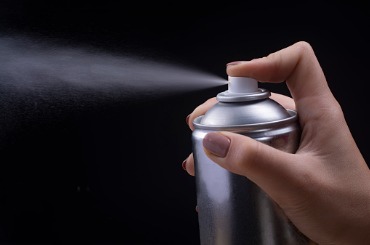
The Hairspray Hack
This is a simple hack you could recommend to your clients. Hairspray has a dense formula that causes a fly’s wings to get stuck, slowing them down. This homemade “fly-repellent spray” makes it easy to beat them with a newspaper roll or other item.
Are Natural Fly Repellents Safe?
Most people equate natural with safe, which is a huge misconception. Remember, natural fly repellents aren’t tested or approved by the EPA. As such, we can only rely on science-backed evidence to prove their effectiveness and safety.
In addition, the processes used to extract the oils and other plant-based repellents aren’t always organic. Some compounds need biomass energy, while others use organic solvents that require proper disposal. Training your staff on the best way to handle natural fly deterrents is the best way to ensure safety.
Keep Your Space Clean and Use Fly Traps

Even with so many natural remedies, it’s best to prevent flies by reminding your clients to clean their spaces. This includes keeping garbage cans and garbage bins clean, as well as the prompt and appropriate disposal of peels, pet waste, compost piles, grass clippings, animal waste, or other waste properly to avoid attracting flies to decaying organic matter.
You can also help them set up soda-bottle fly traps, sugar-water fly traps, or sugar-sweet fly traps to keep off flies after any pest control efforts.
Don’t Forget Food and Water
Flies are attracted to food and water sources, so it’s important to remind your clients to keep these areas clean and sealed properly. Make sure they store food in airtight containers, clean up spills and crumbs promptly, and do not leave any dirty dishes in the sink. Additionally, ensure that pet food is stored securely and that water bowls are kept clean.
Saving Time With Pest Control Software
In today’s fast-paced world, time is of the essence. One way to streamline your pest control business and save time is by utilizing pest control software. This software can help you manage appointments, track customer information, schedule services, and even automate billing processes.
Pest control software also allows you to schedule appointments more efficiently. With just a few clicks, you can see your availability and book appointments with clients. This eliminates the need for back-and-forth communication and helps you stay organized.
Benefits of using PestPac Software
PestPac offers numerous benefits for pest control companies looking to streamline their operations and improve efficiency in providing pest control services. Here are some key advantages to using PestPac’s software:
1. Streamlined Scheduling: With PestPac, you can easily schedule pest control and other services, ensuring that your technicians are always on time and maximizing their productivity.
2. Mobile Access: PestPac’s mobile app allows technicians to access and update pest control services in real time, reducing the risk of errors and improving communication with homeowners.
3. Customizable Reports: PestPac’s software allows you to create customized reports for each pest control service, including photos and detailed notes, providing transparency and professionalism in your services.
4. Integrated Billing: PestPac’s software seamlessly integrates with billing systems, allowing you to easily generate invoices for pest control services and track payments.
5. Enhanced Customer Service: By using PestPac’s software, you can provide homeowners with timely updates on their pest control and treatments, improving customer satisfaction and loyalty.
By investing in pest control software like PestPac, you can improve operational efficiency, save time, and provide exceptional service to homeowners.
Get Started With Pest Control Software!
Final Word
You can confidently add natural fly repellents to your pest control arsenal. They are safer, more effective, and hardly cause health problems.
Like any other service company, keeping tabs on all your customers’ needs can be daunting. You may need to market the new natural pest products to potential customers and answer numerous questions. Having a tool that streamlines all such processes comes in handy, and our pest control software is an excellent example. Check it out today to learn more about this holistic business solution.




